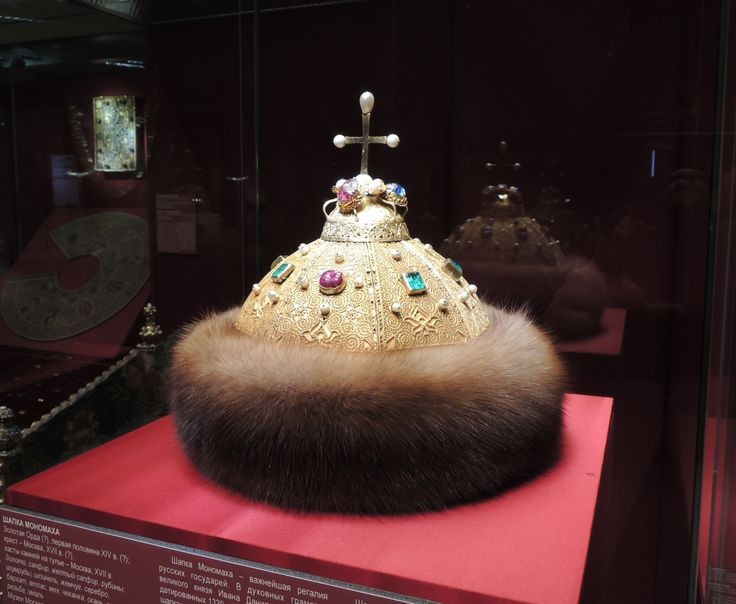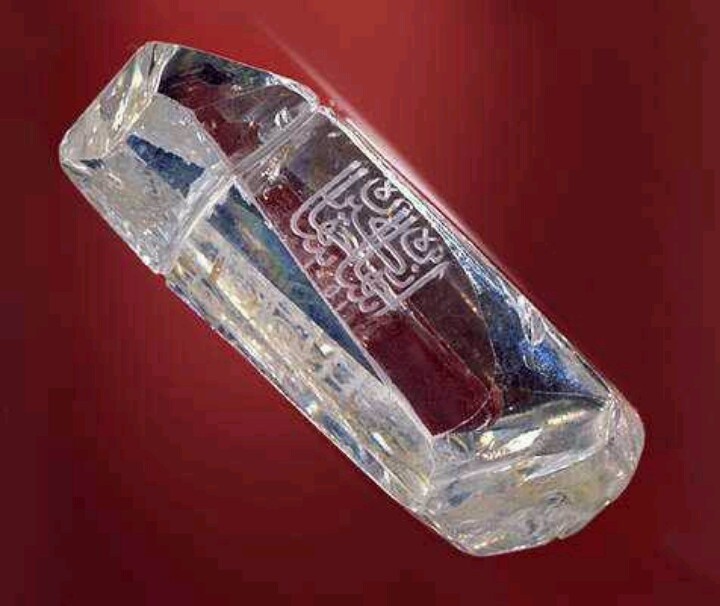We invite you to explore the 5 most mysterious stories related to famous treasures in the Russian Royal treasury.
Crown of Munomakh
This is the oldest and best preserved jewel in the Russian Tsar ‘s treasury. The gold plates of this hat are decorated with more than 40 precious stones including emeralds, sapphires, rubies and pearls.

The edge of the hat is also covered with sable fur. The tsars believed that the hat was a gift from the Byzantine emperor Constantine to his nephew, Prince Vladimir Munomakh of Kiev, who ruled during the 12th century. It originally came from Babylon; it was among the priceless treasures of Emperor Nebuchadnezzar.
The Kiev princes wore this crown and then passed it on to the Vladimir princes – who in turn passed it on to the Moscow princes who united the princes into a single great state.
The notion of Moscow as a Third Roman Empire has been argued to be plausible and emphasizes the rule of the Moscow princes. A more realistic hypothesis is that the Munomakh crown, which was derived from a Central Asian headdress, was probably created in the 14th century by Asian crown masters and presented as a gift to the Moscow prince Ivan Kalita for his loyalty to Khan Uzbek of the Golden Horde.
From then on, the “golden crown” was always inherited from father to eldest son. The Russian Tsars wore this crown only during their lifetime: when they were crowned. It was last worn in 1682 at the coronation of Tsar Ivan V.
The Orlov Diamond

Throughout much of the 18th century, the Russian Empire was ruled by women, and it was during this period that the imperial court was at its most dazzling, literally. Catherine the Great was known for her love of jewelry. It’s no surprise that during her reign, the Russian court was home to one of the world’s most famous gems: the Orlov Diamond, which in 1774 became part of the emperor’s scepter.
According to legend, the Orlov Diamond weighed 189.62 carats and was given to Empress Catherine by her lover Grigory Orlov. Another theory says that Empress Catherine the Great secretly purchased the priceless gem with the imperial treasury.
The Orlov diamond was found in a diamond mine in Golkonda (India) in the 17th century, the original owners of this treasure were the emperors of the Mogul empire.
In the mid-18th century, the Persian ruler Nader Shah invaded and took over New Delhi and took the Orlov diamond along with other valuable jewels. The Orlov diamond was then placed in one of the eyes of the statue of the god Ranganatha in a Hindu temple, but a French soldier secretly stole the treasure.
This soldier managed to convert to Hinduism and worked hard in the temple to gain the trust of the Brahmins and also to easily steal the Orlov diamond. Thanks to this French soldier, the diamond treasure appeared in London after changing hands many times before entering the jewelry collection of Queen Catherine the Great. Ivan Lazarev, who sold this treasure to the Queen.
Shah Diamond

There is a diamond soaked in blood and many tragedies that appeared in Russia. In 1829, a Persian prince brought this treasure to Tsar Nicholas I as compensation for the destruction of the Russian Embassy in Tehran, and the murder of Alexander Griboyedov, then a diplomat and author of the book WoefromWit.
The Shah Diamond weighs 88.7 carats and is uncut but polished, with a groove in the center that shows it has been through the hands of a master gem cutter. The story of this treasure begins in a mineral mine in India in the mid-15th century. The three sides of the Shah Diamond are engraved with the names of its three owners: Nizam Shah, ruler of the great Mogul empire-Jahan Shah; and the Persian emperor-Fath Ali Shah.
Strangely enough, every time the Shah Diamond was engraved with a name, war and chaos broke out, and the diamond passed through many different hands. The last name engraved on the Shah Diamond was in 1824, after the Shah’s army was wiped out in the Russo-Persian War.
Under the peace treaty, the territory of Eastern Armenia was given to Russia and the Shah was required to pay the Russian Empire about 20 million silver rubles. And although the Shah diamond is famously given as compensation for the loss of a Russian envoy in Teheran, historians believe that the Russian Emperor received it as a war reparations payment.
Vladimir’s Crown

The history of this precious diamond tiara with teardrop-shaped pearls has been worn by Queen Elizabeth II of England, but its origins lie in the Russian Imperial family in the 19th century. Around 1874, Grand Duke Vladimir Alexandrovich, brother of Emperor Alexander III, sent the diamond tiara as a gift to his bride, Duchess Marie of Mecklenburg-Schwerin, on their wedding day. The priceless diamond tiara was crafted by the court jeweler Carl Edvard Bolin and is remembered as the Vladimir Tiara (named after Bolin’s client).
After the October Revolution, Duchess Marie took refuge in Kislovodsk and by some miracle, she received the help of a British diplomat and archaeologist named Albert Stopford to smuggle many treasures out of Russia in 1920. After Duchess Marie died, her daughter sold the jewels to Queen Mary of Teck, the official wife of King George V of England. Thus, Queen Elizabeth II inherited the precious diamond tiara from her grandmother.
The Jewels of the Last Russian Emperor
Tsar Nicholas II’s wife, Empress Alexander Fyodorovna, owned a valuable collection of jewels. The empress owned unique items such as a Fabergé rose hairpin decorated with sparkling diamonds, and two 2m-long spears decorated with perfectly sized grape-sized pearls.

In 1917, the Bolsheviks moved the family of Tsar Nicholas II to Siberia, and the empress and the princesses took some of their jewelry with them, hiding jewels under their clothes, replacing buttons with diamonds, and sewing everything into hats, velvet cords, and underwear. After the former Tsar’s family was murdered, all of their treasures were taken by the Bolsheviks.
From 1925 to 1926, a catalogue describing the diamond treasures was published. It included royal jewels and precious garments. The catalogue, in four parts, was published in the main European languages and distributed to potential buyers.
In October 1926, Norman Weis, a representative of the Anglo-American trade union, bought 10 kg of assorted royal jewels, paying just £50,000. Norman Weis sold some of these jewels to Christies, but the main auction of masterpieces took place at the Russian Jewels Auction House in London in March 1927.
Among the 124 jewels are the Russian royal wedding crown, a tiara with earrings, and the ruby butterfly of Empress Catherine the Great.




